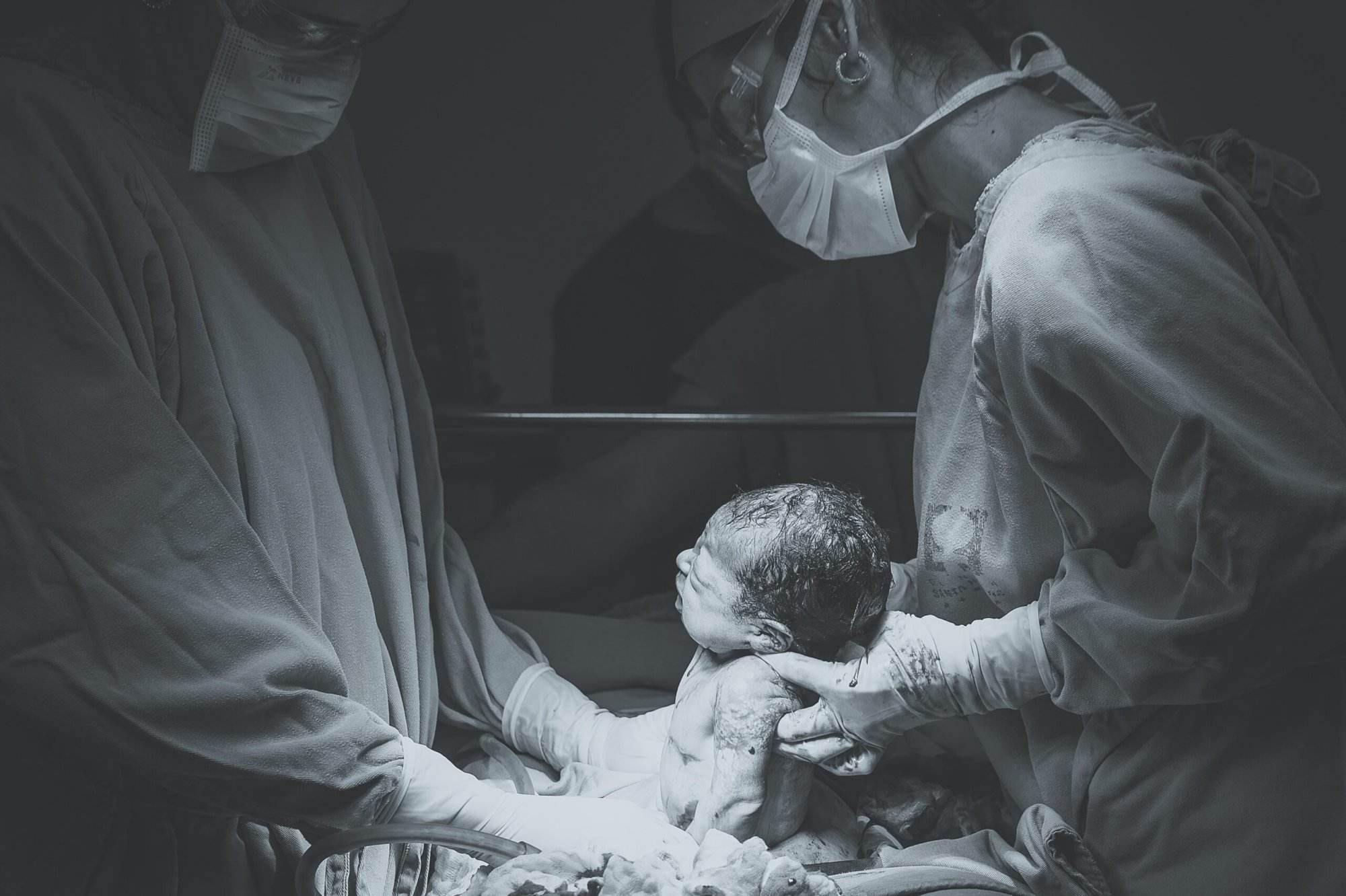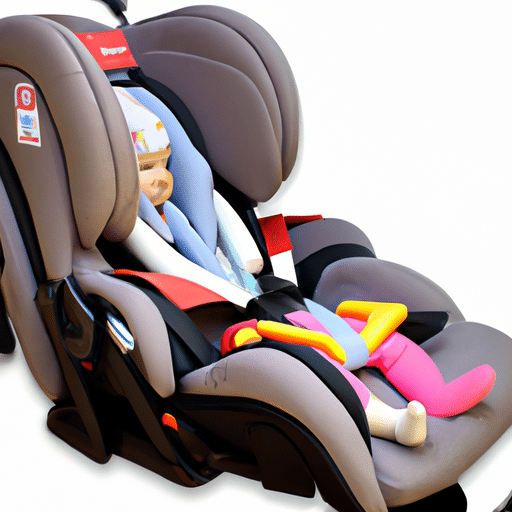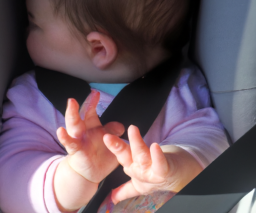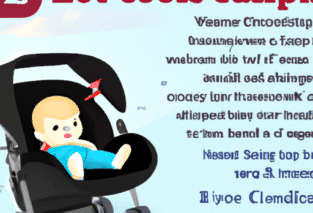When it comes to car safety for your precious little one, it’s natural to have questions and concerns. One topic that often leaves parents puzzled is which side of the car should a baby car seat be on. With contrasting opinions and a plethora of information out there, it’s important to understand the factors that come into play when deciding the ideal placement for your baby’s car seat. In this article, we will explore different considerations and expert recommendations to help you make an informed decision that prioritizes your baby’s safety.

Safety Factors to Consider
When it comes to ensuring the safety of your child in a car, there are several factors you need to consider. From the installation method to the position of the car seat, each aspect plays a crucial role in protecting your little one during a journey. Here are some key safety factors to keep in mind:
LATCH System
The LATCH system (Lower Anchors and Tethers for Children) is a built-in feature in most vehicles manufactured after September 2002. It provides anchor points and a tether strap for the easy installation of car seats. Using the LATCH system ensures a secure and firm attachment, reducing the risk of the car seat being improperly installed or coming loose during a crash.
Seatbelt Installation
If your vehicle does not have the LATCH system or you have reached its weight limit, another option for installing a car seat is using the seatbelt. It is important to follow the manufacturer’s instructions and make sure the seatbelt is properly threaded through the designated slots on the car seat. Double-check that the seatbelt is securely fastened and there is no excessive slack.
Distance from Airbags
Airbags are designed to provide protection for adults in the event of a crash. However, they can be dangerous for infants and young children. To ensure their safety, it is crucial to place the car seat in a position that is at a safe distance from any active airbags. The back seat is generally the safest location, but if you must place the car seat in the front, make sure to deactivate the airbags or consult your vehicle’s manual for specific instructions.
Visibility
Having a clear line of sight is essential for monitoring your child while driving. When positioning the car seat, consider the visibility factor. Placing the car seat in a position that allows you to easily see and check on your child will provide peace of mind and allow you to react quickly to any potential issues.
Ease of Access
Accessibility to the car seat is another safety factor to consider. In case of an emergency or a quick stop, you need to be able to reach your child swiftly. Placing the car seat in a location that allows you easy access will ensure that you can attend to your child’s needs promptly without compromising their safety or your ability to drive.
Protection from Intruders
While unlikely, the possibility of someone trying to open the car door or snatch your child should not be disregarded. Positioning the car seat in a way that it is not easily visible from the outside or within reach of windows will provide an added layer of security and protection for your child.
Climate Control
Maintaining a comfortable temperature within the car is important for your child’s well-being. Placing the car seat in a location where the climate control system can effectively reach your child will ensure they are neither too hot nor too cold during the journey.
Proximity to the Driver
Having your child within close proximity can make it easier for you to attend to their needs while driving. Placing the car seat within reach will allow you to offer comfort, food, or attention if necessary without compromising your focus on the road.
Proximity to Other Passengers
The position of the car seat with regard to other passengers also needs to be taken into account. Placing the car seat in a location that minimizes potential interference or distractions from other travelers can contribute to a safer and more focused driving experience.
Position in Multiple Cars
If you have multiple vehicles or frequently ride in different cars, consider the versatility of the car seat. Some car seats are designed to be easily transferable and compatible with various vehicles. Having a car seat that can be securely installed in different cars ensures consistent safety regardless of the vehicle being used.
Laws and Regulations
In addition to considering the safety factors mentioned above, it is vital to familiarize yourself with the laws and regulations pertaining to child car seat usage in your jurisdiction. Adhering to these laws not only helps ensure the safety of your child but also avoids potential legal consequences. Here are the different levels of regulations to be aware of:
Local Traffic Laws
Every state or region has its own specific traffic laws that address child car seat usage. These laws determine the age, weight, and height requirements for different types of car seats. Familiarizing yourself with the local traffic laws will help you understand the specific guidelines and legal obligations for securing your child in a car seat.
National Regulations
In addition to local traffic laws, many countries have national regulations that set standards for child car seat usage. These regulations often provide guidelines for the type of car seat to use based on the child’s age, height, and weight. Understanding and following these national regulations ensures compliance with the highest safety standards.
Specific Car Seat Guidelines
Each car seat also comes with its own set of guidelines provided by the manufacturer. These guidelines outline important information about proper installation, adjustment, and usage of the specific car seat model. Following these guidelines will help maximize the safety benefits of the car seat and minimize potential risks.
Rear-Facing vs. Forward-Facing
One of the key decisions parents face when choosing a car seat is whether to use a rear-facing or forward-facing position. Each position offers its own advantages and considerations. Let’s take a closer look at both:
Rear-Facing Position
The rear-facing position is recommended for infants and young children as it offers the best protection for their vulnerable body structure. In a rear-facing seat, the force of a crash is distributed evenly across the child’s body, reducing the risk of serious injuries, particularly to the head and spine. This position is especially critical for infants under the age of one.
Forward-Facing Position
As children grow older and reach the weight and height limits for the rear-facing position, they can transition to a forward-facing seat. The forward-facing position provides children with a better view of their surroundings and is generally more comfortable for longer journeys. However, it is essential to ensure that the child meets the age, weight, and height requirements before making this transition.
Transitioning from Rear-Facing to Forward-Facing
The transition from rear-facing to forward-facing should be done only when the child exceeds the weight or height limitations set by the manufacturer or local regulations. It is not recommended to rush this transition, as rear-facing is the safest position for as long as possible. Make sure to carefully read the instructions provided by the car seat manufacturer and follow the specific guidelines for transitioning.
Driver’s Side vs. Passenger’s Side
When choosing the side of the car to place the car seat, there are a few factors to consider. Here’s an overview of the different sides and their implications:
Driver’s Side
Placing the car seat on the driver’s side allows for easier access and monitoring by the driver. This position can be beneficial for parents who primarily drive alone with the child, as it provides a more direct line of sight and enables quick response to any needs or emergencies. However, keep in mind that if you frequently pick up or drop off your child on the curb side, placing them on the driver’s side may pose potential risks from passing traffic.
Passenger’s Side
Placing the car seat on the passenger’s side is also a popular choice. This position allows the driver to easily see the child through the rearview or side mirrors. It can be advantageous for parents who frequently have another adult passenger in the car who can easily attend to the child’s needs. Additionally, it may reduce potential risks when loading or unloading the child from the vehicle in busy parking lots.
Middle Seat
The middle seat is often considered the safest position for a car seat. Placing the car seat in the middle reduces the risk of side-impact crashes and provides equal distance to both doors. However, not all vehicles are equipped with the necessary safety features in the middle seat, such as the LATCH system or dedicated tether anchors. It is important to check your vehicle’s manual to ensure proper installation and safety in the middle seat.

Age and Size Considerations
As children grow, their car seat needs will evolve. Here are some age and size considerations to keep in mind:
Infants vs. Toddlers
Infants require specialized car seats, commonly known as infant car seats or rear-facing infant seats. These seats are designed to provide maximum support and protection for newborns and babies up to a certain weight and height. Toddlers, on the other hand, may require larger car seats, often categorized as convertible car seats, which can be used in both rear-facing and forward-facing positions.
Height and Weight Restrictions
Car seat manufacturers provide specific height and weight limitations for each seat model. It is crucial to match these restrictions to your child’s measurements to ensure a proper and secure fit. Placing a child in a car seat that they have outgrown can compromise their safety during a crash.
Convertible Car Seats
Convertible car seats are designed to adapt to the changing needs and growth of a child. These seats can be used in both rear-facing and forward-facing positions, allowing for extended use as the child grows. Convertible car seats typically have higher height and weight limits compared to infant-only seats, providing a longer lifespan and value.
Expert Recommendations
To ensure the safety of your child in a car, it is essential to consider expert recommendations provided by reputable organizations and agencies. Here are some key recommendations from major institutions:
American Academy of Pediatrics (AAP)
The AAP recommends keeping children in rear-facing car seats as long as possible, until they reach the maximum weight or height allowed by the car seat manufacturer. The AAP also advises transitioning to a forward-facing seat only after the child has exceeded the rear-facing limits. Additionally, they emphasize the importance of using the tether strap for forward-facing car seats to enhance stability and safety.
National Highway Traffic Safety Administration (NHTSA)
The NHTSA provides guidelines and resources for parents and caregivers to ensure safe car seat installation and usage. They emphasize the importance of registering car seats with the manufacturer to receive important safety updates or recalls. The NHTSA also offers free car seat inspection stations across the country to assist parents in correctly installing car seats and addressing any concerns.
Centers for Disease Control and Prevention (CDC)
The CDC provides valuable information on child passenger safety, including best practices for car seat usage. They highlight the importance of using car seats consistently and correctly for every trip, regardless of distance or duration. The CDC also encourages parents to set a good example by always wearing their seatbelts, as children often adopt behaviors they observe from adults.

Common Myths and Misconceptions
There are several common myths and misconceptions surrounding the positioning and usage of car seats. Let’s debunk a few of them:
Misconception 1: The Left Side is Always Safer
Contrary to popular belief, there is no definitive evidence to support the claim that the left side is inherently safer than the right side for car seat placement. Both sides can be equally safe if the car seat is properly installed and secured according to the manufacturer’s instructions.
Misconception 2: The Right Side is Always Safer
Similarly, the idea that the right side is always safer is another misconception. The significance lies in the proper installation and usage of the car seat rather than the specific side it is placed on.
Misconception 3: The Middle Seat is Always Safer
While the middle seat offers advantages in some situations, such as side-impact protection, it is not universally the safest position for a car seat. The safety of the middle seat largely depends on the specific vehicle and the availability of safety features like the LATCH system or tether anchors. It is important to consult your vehicle’s manual to determine if the middle seat is optimal for car seat placement.
Personal Factors to Consider
In addition to the external factors and expert recommendations, there are personal factors that may influence the placement of the car seat. Here are some personal considerations:
Car Type
The design of your vehicle can play a role in determining the ideal position for the car seat. Factors such as the size of the car, the location of safety features, and the presence of compatible anchors or tethers can influence the placement decision.
Number of Children
If you have multiple children who require car seats, the number and ages of the children can impact the positioning of the car seats. Finding the best arrangement that maximizes safety and accessibility for all children should be a priority.
Ability to Monitor
Consider your ability to monitor your child while driving. Placing the car seat in a position that allows you to easily see and communicate with your child can provide peace of mind and facilitate a safer driving experience.
Seating Arrangement
If you frequently have other passengers in the vehicle, consider the seating arrangement that minimizes potential distractions and ensures the safety of all occupants. Placing the car seat in a location that avoids interference from other passengers can contribute to an overall safer journey.

Consulting with Professionals
When in doubt, consulting with professionals in the field of child passenger safety can provide valuable insights and guidance. Here are some professionals you can consult:
Pediatrician
Your child’s pediatrician is a trusted source of information regarding child safety, including car seat usage. They can offer specific recommendations based on your child’s age, size, and any unique medical considerations.
Certified Child Passenger Safety Technician
Certified Child Passenger Safety Technicians are experts in car seat installation and usage. They can provide hands-on assistance in properly installing and adjusting your car seat. You can find a certified technician through organizations such as the National Child Passenger Safety Board or local inspection stations.
Car Seat Manufacturer
The manufacturer of your car seat is a valuable resource for any questions or concerns you may have. They can provide specific guidance and technical information regarding the proper installation and usage of their product.
Conclusion
Ensuring the safety of your child in a car is of utmost importance. By considering safety factors such as the LATCH system, seatbelt installation, distance from airbags, and visibility, as well as following laws and regulations, choosing the right car seat position, considering age and size factors, and following expert recommendations, you can significantly enhance the safety of your child during every journey. By also dispelling common myths and considering personal factors, you can make informed decisions that prioritize your child’s well-being. Remember, when in doubt, always consult with professionals who specialize in child passenger safety to ensure your child’s car seat is installed and used correctly.






